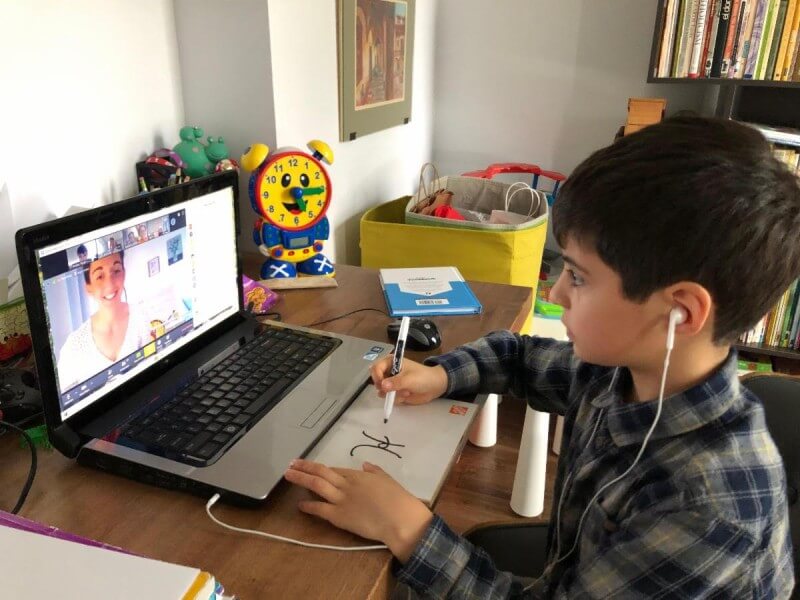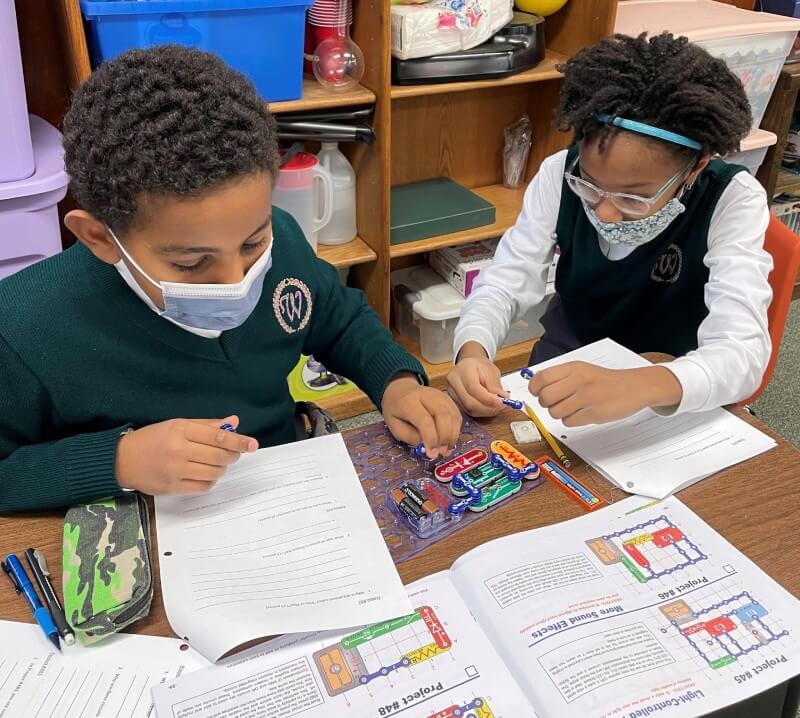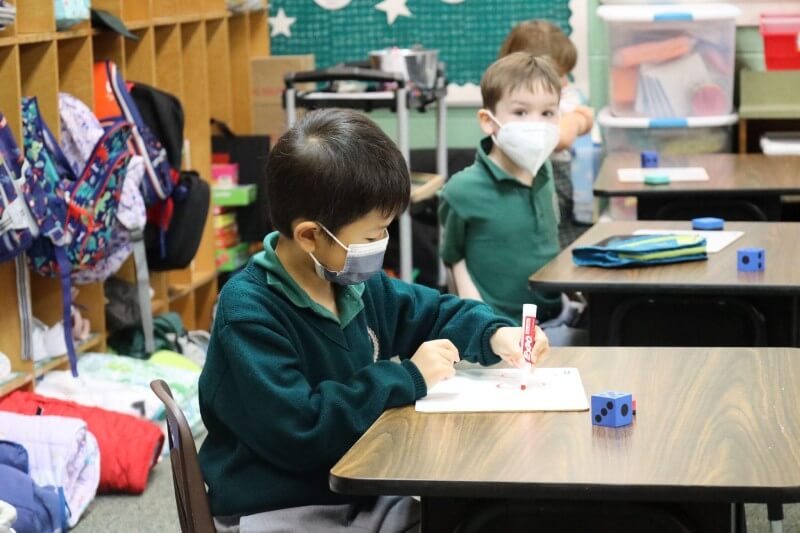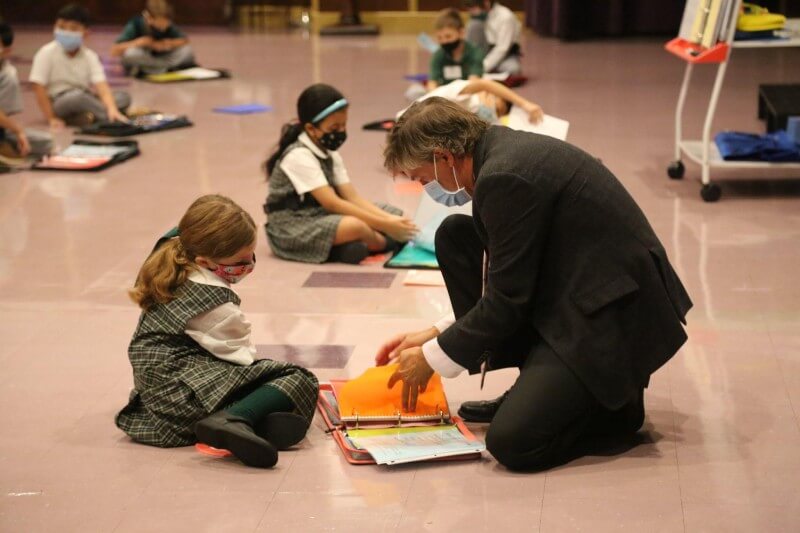How the Students at Westminster School Didn’t Miss an Educational Beat
As we look back on the loss of learning during the pandemic, it’s easy to get discouraged. Test scores are down. Progress in everything from math to reading to social skills regressed. However, the educational successes of Westminster School in Annandale, Virginia, and other private schools offer a blueprint for how children can weather unexpected challenges—without sacrificing educational progress.

The Educational Effect of the Pandemic
National test results are in, and it’s clear: the pandemic was devastating to the educational progress of American schoolchildren. The performance of nine-year-olds in both reading and math regressed two levels from two decades ago.
It’s the first time in approximately fifty years of tracking data that this age group regressed in math. Reading took an even bigger hit, falling by the largest margin seen in thirty years.
It’s Not Just Test Scores
The hard data is convincing enough, but anecdotal evidence paints an even more difficult picture. Both parents and teachers saw significant regression in student:
- Behavior
- Attitude
- Engagement with school
- Social skills
- Overall emotional state
The Pandemic Revealed Why Private Education Is Worth the Investment

For many parents, it’s difficult to justify the cost of a private elementary school education when public school is a free and readily available option. With the onset of the pandemic, however, it became clear private schools offered significant benefits.
While declining test scores and disengagement with learning were common in large, overwhelmed public schools, smaller, more agile private schools were not experiencing the same problems to the same extent.
Learning continued in a much less disrupted way, and students were able to capitalize fully on the entire year of learning.
While public schools were undergoing the largest disruption to American education in history, private schools were largely able to accommodate distance learning in a seamless, effective way.
While the pandemic is one specific example, it speaks to how private schools are better equipped to handle the unexpected in general.
When it comes to a child’s education, having an uninterrupted, challenging, high-quality experience means private schools are a worthwhile investment.
4 Factors That Helped Private Schools Weather the Pandemic

These ill effects of the pandemic were no fault of the public schools. They simply did not have the teachers, resources, or bureaucratic agility to offer tailored solutions to their large student bodies.
While the fault does not lie with the public schools or any of the hardworking teachers and staff members there, the reality is that private schools were able to be more nimble, responsive, and effective during these difficult times.
This came down to four factors:
1. Fewer Students and Lower Student-to-Teacher Ratios
Independent schools often offer two distinct benefits over public schools: fewer overall students and a lower student-to-teacher ratio per class.
With fewer students to serve during the pandemic, it was easier at every stage to combat issues:
- Identify problems
- Analyze those problems
- Make quick decisions
- Communicate the result of those decisions to all relevant parties
- Implement policies
2. Easier Access to Technology
Again, the smaller size of the school and the student body meant access to the required technology for remote learning was less of a logistical hurdle. Students were able to access what they needed to attend remote learning, and the school was able to establish the technology it needed to facilitate that quickly and efficiently.
3. Increased Engagement
While many public schools had periods of no school at all, private schools were more quickly and easily up and running with remote learning. Because there was this continuity of learning and less prolonged uncertainty about the school year, private school students enjoyed a more engaged, involved, and uninterrupted learning experience.
According to The Atlantic, private school students had “both less and better remote schooling.”
4. Flexibility and Agility in Independent Schools
Perhaps the most telling difference between private schools and public schools is the underlying bureaucratic structure. While public schools are large and unwieldy, private schools are smaller and more nimble.
Heads of school can make quick, decisive moves with the help of their small administrative teams and boards of trustees.
“There were many obstacles and glitches along the way while transitioning to distance learning,” said Westminster Assistant Head of School Susan Glazier, “but the Westminster community relied on its independent ability to problem solve and its institutional can-do ethos built over many years.”
How Westminster School Ensured the Continuation of Learning
With the freedom and agility of an independent school, Westminster could efficiently and effectively make the countless decisions necessary to reinvent school in this unprecedented environment.
Over just three weeks, here are a handful of the decisions they made:
- The school realized distance learning was necessary, and they chose Zoom to host online classes. (Within those three weeks, all teachers and students were trained, and high-speed Internet cabling and cameras were installed throughout the school.)
- Virtual schooling was made available to all students (preschool to eighth grade).
- Students were still required to wear uniforms during distance learning. It put them in the right frame of mind for learning and provided much-needed continuity between the in-person and remote learning experiences.
- The administration and teachers devised ways to do everything from gauging participation to administering assessments fairly and honestly.
- The school held extra help sessions to assist students who needed it.
- The school offered virtual enrichment classes, including music, art, and PE.
- Westminster safely and responsibly fostered a sense of community during an isolating period through online class lunch periods, trivia contests, talent shows, and drive-throughs.
Always finding a silver lining, Glazier had this to say:
“One benefit of distance learning was this: Westminster parents could appreciate, for the first time, by being virtually in class with their child, the breadth and depth of the daily education for which they were paying.”
The Return to In-Person Learning at Westminster School

By the fall of 2020, Westminster School made either in-person or distance learning available.
Built on the back of an effective and comprehensive back-to-school plan, nearly all students had returned for in-person instruction by January 2021. Specialty programs, including the school play, were held but modified for safety.
Extensive and vigilant health policies meant the school only experienced a few school-based cases of COVID-19.
“Westminster families have expressed deep gratitude to the school,” said Glazier. “Its efforts and success in guiding their children through the school’s rigorous curriculum, as well as a full social experience, despite the pandemic, are appreciated beyond words.”
Interested in Learning More about Westminster School?
Are you concerned about any progress your child might have lost in public school during the pandemic? It’s not too late to get back on track—and to exceed academic expectations.
Schedule your tour of Westminster School today, or contact us with any questions. We’re always happy to help!

